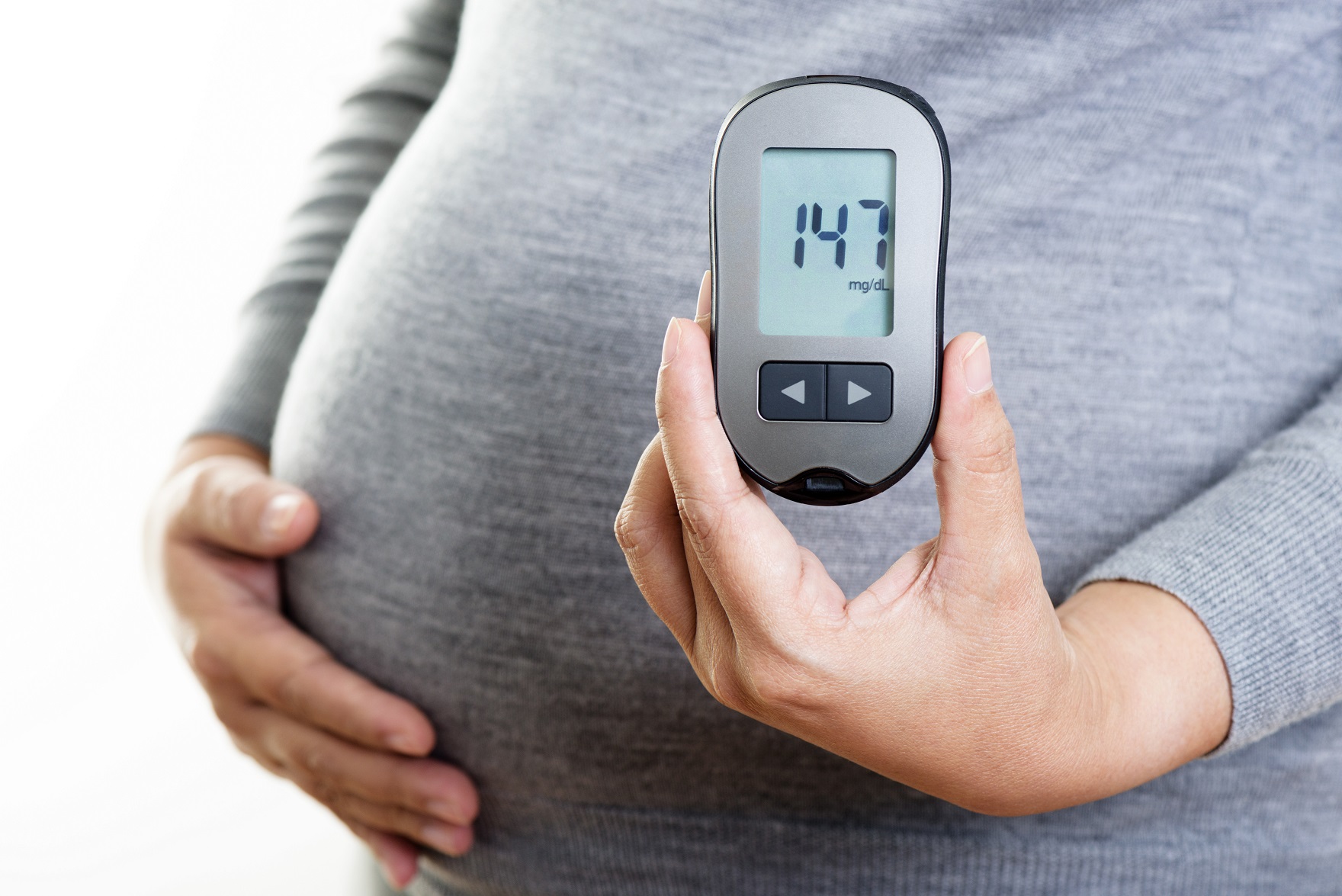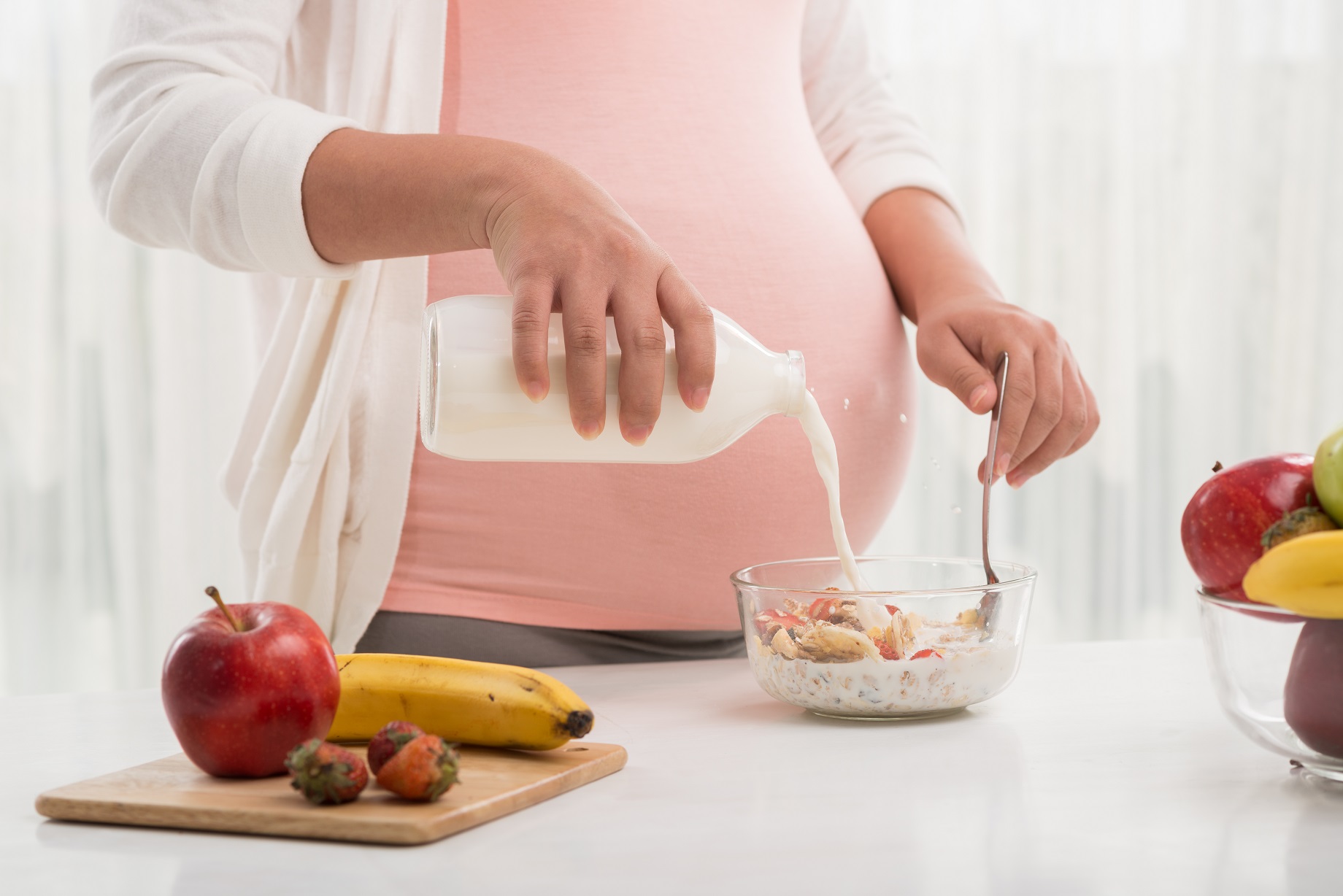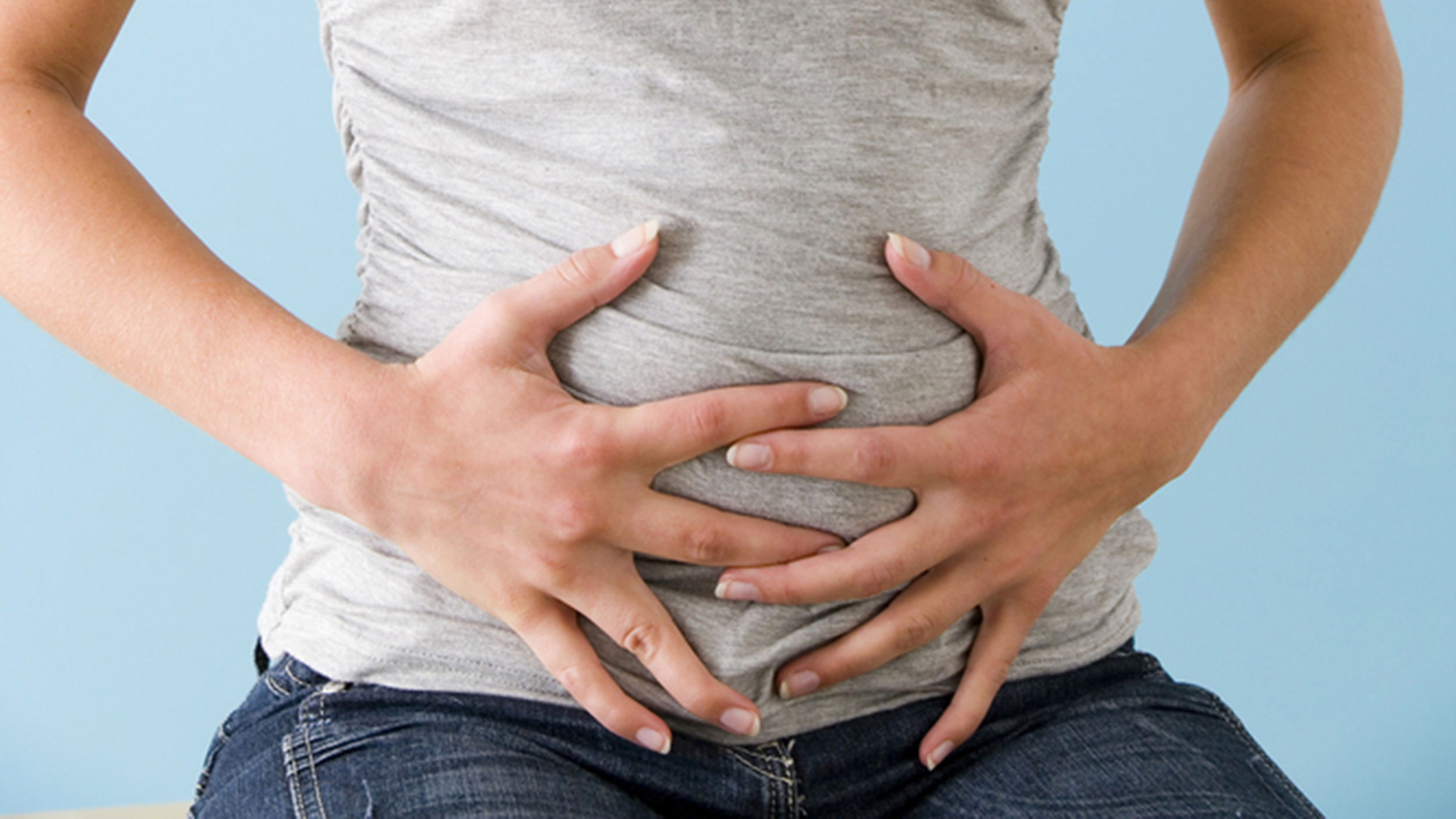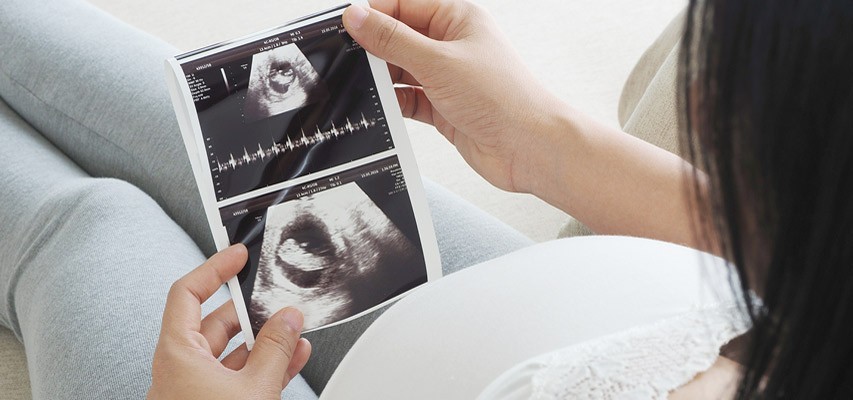

Gestational Diabetes Mellitus (GDM) is a temporary form of diabetes that occurs during pregnancy. Women with no prior record of diabetes develop high blood sugar levels that usually arise in the second half of the pregnancy. While GDM resolves itself soon after the baby is born, women with a history of GDM have an increased risk of developing type 2 diabetes later in life.1
All expectant mothers will be tested for GDM at some point in their pregnancy, and it affects 1 in every 5 women. Recent data has shown that up to 50 per cent more pregnant women in Singapore have been diagnosed with gestational diabetes in 2018.1
The danger of GDM arises when expectant mothers treat it as nothing more than a passing phase, believing it will resolve itself after their pregnancy. If left untreated, expectant mothers may develop high blood pressure or go into pre-term labour, which leads to an increased risk of both mother and foetal death.
When managed properly, women with GDM go on to have a healthy pregnancy and deliver healthy babies. Keeping GDM in check boils down to one factor – your diet. Healthy eating makes all the difference when it comes to GDM, as you are in control of keeping your blood sugar levels within a healthy range.
READ ON FOR TIPS ON HOW TO COPE WITH GDM AND HOW TO AVOID THOSE HIDDEN SUGAR TRAPS

Three Meals and Three Snacks a Day
The first step to managing GDM is to be able to stabilize your blood sugar levels within a healthy range throughout the day. To do so, it is helpful to learn the factors that can cause blood sugar levels to spike.
One such factor is eating too much in a single meal, which can cause blood sugar levels to fluctuate uncontrollably due to the sudden intake of carbohydrates. While carbohydrates are a necessary fuel source for you and your baby, an excessive amount raises blood sugar levels beyond the healthy range.
A good way to combat this is to portion your daily foods into three meals a day with three snacks like so:
Eating spaced out meals every 2 to 3 hours provides a consistent fuel source while allowing you to spread out your daily intake of carbohydrates throughout the day.
Another key factor is to avoid skipping meals, as it may cause you to eat a larger serving in a single sitting to curb your hunger. It is important to keep to a scheduled meal plan to keep yourself feeling full while maintaining a healthy blood sugar level.
Breakfast: The Most Important Meal of the Day
Since blood sugar levels tend to be the highest in the morning, breakfast is the most important meal to limit the intake of carbohydrates. Foods like refined cereals, fruit juices and milk are high in carbohydrates that may cause blood sugar levels to spike.
Expectant mothers with GDM are encouraged to eat a small breakfast that is rich in proteins while keeping carbohydrates to a minimum. Choosing carbohydrates that are high in fibre like whole grains, potatoes or legumes can also provide more nutrition both for mother and baby.
A recommended breakfast consists of:
If blood sugar levels are consistently high in the morning, opt for a bedtime snack that includes both protein and carbohydrates to keep blood sugar levels in check during the night.
READ ON FOR THOSE HIDDEN SUGAR TRAPS YOU NEED TO AVOID

Learn How to Spot Hidden Sugars
Expectant mothers with gestational diabetes may have to reconsider regular food choices, especially when it comes to hidden sugar. These everyday foods are surprisingly high in sugar and can wreak havoc on blood sugar levels.
While it is marketed as a source of vitamins and minerals for the body, a single glass contains up to six teaspoons of sugar. When fruit is juiced, all the fibre is removed, leaving behind a concentrate that is loaded with sugar. The fibre is necessary to slow the release of sugar into the bloodstream to avoid a spike in blood sugar levels. Instead of juice, eat your fruits whole to get all the fibre and minerals.
Sauces are often overlooked, but the sugars in condiments can really add up, since they tend to be consumed excessively in Asian cuisines. Teriyaki sauce, garlic chilli and even salad dressing are often high in sugar. Try seasoning food with spices instead of sauces to limit sugar intake.
Sugar-free foods tend to replace sugar with sugar alcohol, which may affect your blood sugar levels as they still contain calories. Always read the labels and avoid products that contain these sugar alcohols:
NEXT: THE SECRET WEAPON YOU NEED TO LOWER YOUR BLOOD SUGAR LEVELS

Chicken Essence Actually Regulates Blood Sugar Levels
A protein-rich diet is highly recommended for expectant mothers with GDM as it:
Expectant mothers can now reduce the risk of gestational diabetes with regular consumption of BRAND’S® Essence of Chicken, as it lowers glycaemic response.2,3
Glycaemic response refers to the changes in blood sugar level after consuming a carbohydrate-rich food. Decreased glycaemic response has been associated with a lower risk of diabetes and metabolic diseases.
It is recommended to consume a single bottle during lunch and dinner, either straight from the bottle or by infusing it in cooked dishes.
Each BRAND’S® Essence of Chicken bottle contains:
Natural Goodness in a Bottle
BRAND’S® Essence of Chicken is the only clinically proven brand that is backed by science and published in over 40 scientific papers. It comes as a highly recommended prenatal nutrition for expectant mothers with gestational diabetes.
The recommended consumption of two bottles per day provides you with the essential nutrition needed to nourish your body and regulate blood sugar levels. It remains the choice supplement of expectant mothers that lowers the risks associated with GDM while ensuring a healthy, well-nourished pregnancy.
BRAND’S® Essence of Chicken is available island-wide in leading supermarkets and selected online retailers.
Find out more about how BRAND’S® Essence of Chicken can benefit you during your pregnancy @ https://bit.ly/30wdoQX

How Much Does it Cost to Have A Baby in Singapore?
Raising a child in Singapore requires financial planning and preparation even before the baby is born. There are many considerations, such as the delivering hospital, type of delivery, whether to store your baby's cord blood and cord lining, and many more.
Check out below to find out more about what cord blood banking is and the general maternity costs in Singapore!
More information on cord blood banking can also be accessed here!


 You’re down to the final few weeks of your pregnancy, and you’re almost ready to meet your little one. At your third trimester, you should be increasing your check-ups to once every 2 weeks (between 27 – 36 weeks) and switching to once-a-week until your delivery date.
You’re down to the final few weeks of your pregnancy, and you’re almost ready to meet your little one. At your third trimester, you should be increasing your check-ups to once every 2 weeks (between 27 – 36 weeks) and switching to once-a-week until your delivery date.
This handy checklist will keep you on track during this final homestretch to ensure you have all bases covered for a smooth delivery. We’ve put together a list of essential things to check with your doctor as your due date draws near.
☑ Get Your Tdap Shot
Whooping cough is a respiratory infection that is life-threatening for infants, especially within their first 6 months, as it may lead to pneumonia and brain injury. Most young babies with whooping cough are likely to be admitted to hospital and they may be at the risk of dying from the disease. 1,2
Did you know that mothers can pass on their antibodies to their babies during pregnancy?3 This helps protect newborns from these infectious diseases during their first few months, as they cannot get vaccinated until they are 3 months old.4
The Ministry of Health Singapore strongly recommends influenza and pertussis vaccination in pregnancy, in line with international guideline recommendations from the United Kingdom, the United States and other countries. In 2017, the Ministry extended the use of Medisave for vaccines under the National Adult Immunisation Schedule, which include the vaccine against influenza and pertussis.4 Remember, you can help protect your unborn baby against whooping cough by getting vaccinated with Tdap Vaccine during the 3rd trimester (between 27 – 36 weeks) of your pregnancy.5
☑ Protecting your baby from flu
Influenza is a highly infectious respiratory viral illness that is transmitted from person to person via respiratory droplets propelled by coughing or sneezing. While most infected people will recover within 1 to 2 weeks, pregnant women, at any stage of pregnancy, are more likely to develop severe illness and are therefore at a higher risk of morbidity, and even mortality. 4,6,7,8 Getting the common cold while you’re pregnant could cause severe problems like early labour and may increase the likelihood of birth defects. 7,9
The flu shot is safe at any stage of pregnancy, and also poses no risk for women who are breastfeeding. What’s more, it can also provide protection to newborns when vaccinated during pregnancy, as mothers can pass on antibodies to their developing baby. 4
Newborns are very likely to catch the flu from family members and caregivers, so be sure that everyone at home is up-to-date with their annual flu vaccinations before coming into close contact with the baby.10

☑ Check the baby’s position
Nearing your delivery date, an ultrasound would be done to determine if your baby is positioned headfirst in the uterus for safe delivery.11 Don’t worry if your baby is positioned feet-first, you might just have a very active baby and most babies would naturally turn to a head down position by 37 weeks.12
Some mothers may turn to a chiropractor, a prenatal massage or home exercises to help reposition their baby before delivery. Always check with your gynaecologist on the suitability of these options first. Even if your baby is still in breech position, it is not the end of the world, and your doctor may simply recommend a C-section delivery for your safety.13
☑ Group B Streptococcus Screening
Most females carry group B strep bacteria in our bowel, rectum, bladder and vagina, and usually does not cause any problem for adults but it can cause potentially fatal infections in newborns.14
A simple vaginal and rectum swab will be done in week 35 - 37, and if tested positive for the bacteria, you will be given antibiotics before delivery to reduce the risk of exposure of group B strep to your baby.15
☑ Checking on Your Baby’s Heart Rate
A Nonstress Test (NST) is a simple and non-invasive way of checking on your baby’s heart rate and it can also detect if the placenta is healthy.16
Unlike a stress test for adults that purposefully applies stress to the heart, a NST simply involves placing a fetal monitor over your baby bump for 20-30 minutes to record your baby’s heart rate. 16
This screening test is mostly done for mothers who are past their due dates (40 weeks onwards), or for women who have existing health conditions or have high-risk pregnancies.17
☑ Gestation Diabetes
Gestational diabetes refers to high blood sugar that usually develops in the second trimester of pregnancy. 1 in 5 pregnant women develops diabetes during pregnancy.18
To determine your blood glucose reading, pregnant mothers are advised by the OB-Gynes to undergo a screening test called the oral glucose tolerance test (OGT). A healthy blood glucose reading should stay below 5.00mol//L before meals and below 7,0mmol/L two hours after meals.18
Pregnant women should eat healthily, exercise regularly, and if necessary, take medication to curb with gestational diabetes. 19 It is important to manage one's blood sugar to prevent a difficult birth and keep you and your baby healthy. Blood sugar level generally returns to normal soon after delivery, but if one is at risk for type 2 diabetes, then it is important to keep an eye out for normal blood sugar level even after pregnancy. 19
You are likely to have plenty of questions nearing your due date, never be afraid to speak up when it comes to voicing any health concerns you may have. Be sure to discuss any symptoms with your doctor, no matter how insignificant you think they are. This will make all the difference in the world, especially when it comes to helping your doctor detect pregnancy complications early on before they become serious.
If something doesn’t feel right, always trust your instincts and make sure you are reassured of any concerns that you may have. Feeling prepared and ready is vital in giving you the peace of mind you need before delivery.
For more information on Tdap vaccinations & flu shots, please consult your doctor or pharmacist.
A public awareness initiative brought to you by GlaxoSmithKine Pte Ltd.
For further information, please consult a doctor.
All images used in this material are for illustration purposes only.
SG/GSK/0012/18 Certified 02/10/198
References:

Image credit: Shutterstock
This respiratory condition can be deadly for infants. Getting vaccinated during your third trimester is the best way to protect yourself and your little one1.
Ever had those uncontrollable coughing fits where you feel winded and out of breath afterwards? This cough is dry and doesn’t produce mucus, can last up to 1 minute, and might cause the face to turn red or even purple2. The deep breaths that we take in after those coughing fits led it to be named the Whooping Cough3.
Whooping cough (aka the 100-day-cough, and pertussis) is actually a bacterial infection caused by a bacterium called Bordetella pertussis that gets into our nose and throat2, and spreads very easily from person to person4. However, the Tdap vaccine can help protect both children and adults from getting it5.
To help with vaccinations, the Ministry of Health (MOH) has established the National Adult Immunisation Schedule (NAIS)6 to provide guidance on vaccinations that pregnant mums should adopt to protect themselves against vaccine-preventable diseases7.
Medisave can be used to pay for recommended vaccinations for the specific target adult population groups under the NAIS, at up to a cap of S$500 per year8.
Why is whooping cough a concern in Singapore?
The current vaccination for whooping cough only starts for babies at 3 months of age9. So, there is a gap of protection in babies for first few months of life; around 50% of babies younger than 12 months old who have whooping cough need hospital care10, and the younger the baby, the more likely they’ll need treatment in the hospital11.
The World Health Organisation states that whooping cough is a significant cause of infant death worldwide and continues to be a public health concern even in countries with high vaccination coverage in babies12,13,14.
According to the US CDC, babies who have whooping cough may suffer from these effects15:
In Singapore, cases of whooping coughs in babies and toddlers have been on the rise from 2013 to 201616.
2013: 15 cases of infants and toddlers
2016: 46 cases of infants and toddlers
That’s a 300% increase in just 3 years16!
Why Should Pregnant Women Get Vaccinated?
Tdap vaccine is recommended during the third trimester of your pregnancy7,17, as you’ll be able to pass the protection against whooping coughs to your baby. There’s a transfer of antibodies from mummy to baby after the vaccination18, and this is crucial to baby’s first few months of life when they’re the most vulnerable19.
Aside from Tdap vaccine, getting a flu vaccine is also recommended for pregnant mummies20,21,22. The common flu is a lot more likely to cause complications in pregnant women than women who aren’t pregnant21.
This is due to the changes in your immune system, heart, and lungs during pregnancy that make you more likely to severe illness from flu that requires hospitalisation21,23.
Vaccinations may have side effects24,26 that are generally non-severe for the pregnant mummy – headaches, swelling in the vaccinated area, low grade fever (under 38 degrees), and slight nausea and diarrhoea25. Most importantly, these vaccinations aren’t found to have serious, adverse effects on your pregnancy and on baby too21,26,27.
For further information on these vaccinations, please consult your doctor.
A public awareness initiative brought to you by GlaxoSmithKline Pte Ltd.
All images used in this article are for illustrative purposes only.
[1] https://www.cdc.gov/features/tdap-in-pregnancy/index.html
[2] https://www.cdc.gov/pertussis/index.html
[3] https://www.healthhub.sg/live-healthy/1050/pregnancy-vaccination-for-your-baby
[4] https://www.cdc.gov/pertussis/about/causes-transmission.html
[5] https://www.cdc.gov/vaccines/vpd/dtap-tdap-td/hcp/recommendations.html
[6] https://www.moh.gov.sg/content/moh_web/home/pressRoom/pressRoomItemRelease/2017/moh-establishes-national-adult-immunisation-schedule--extends-us.html
[7] https://ams.edu.sg/view-pdf.aspx?file=media%5C3075_fi_366.pdf&ofile=Adult%2BVaccination%2BGuidelines_HR2+One+PDF.pdf
[8]https://www.moh.gov.sg/content/moh_web/home/costs_and_financing/schemes_subsidies/medisave/Withdrawal_Limits.html
[9] https://www.healthhub.sg/sites/assets/Assets/eServices/HPB-DB-Immunisation-Schedule.pdf
[10] https://www.cdc.gov/pertussis/pregnant/mom/deadly-disease-for-baby.html
[11] https://www.healthhub.sg/a-z/diseases-and-conditions/130/topic_whooping_cough
[12] http://www.who.int/immunization/diseases/pertussis/en/
[13] http://www.who.int/wer/2015/wer9035.pdf?ua=1
[14]http://www.who.int/immunization/monitoring_surveillance/burden/vpd/surveillance_type/passive/pertussis/en/
[15] https://www.cdc.gov/pertussis/about/complications.html
[16] https://www.moh.gov.sg/content/dam/moh_web/Publications/Reports/2017/Air%20Droplet-Borne%20Diseases.pdf
[17] https://www.acog.org/Clinical-Guidance-and-Publications/Committee-Opinions/Committee-on-Obstetric-Practice/Update-on-Immunization-and-Pregnancy-Tetanus-Diphtheria-and-Pertussis-Vaccination
[18] https://www.pregnancybirthbaby.org.au/how-your-babys-immune-system-develops
[19] https://vaccinate.initiatives.qld.gov.au/be-on-time/
[20] https://www.healthhub.sg/live-healthy/908/pregnancy-pre-pregnancy-vaccination
[21] https://www.cdc.gov/flu/protect/vaccine/pregnant.htm
[22] https://www.acog.org/Clinical-Guidance-and-Publications/Committee-Opinions/Committee-on-Obstetric-Practice/Influenza-Vaccination-During-Pregnancy
[23] https://www.ncbi.nlm.nih.gov/pmc/articles/PMC3640235/
[24] https://www.nhs.uk/conditions/vaccinations/reporting-side-effects/
[25] https://www.cdc.gov/vaccines/vac-gen/side-effects.htm
[26] https://www.cdc.gov/pertussis/pregnant/mom/safety-side-effects.html
[27] http://www.who.int/vaccine_safety/publications/safety_pregnancy_nov2014.pdf

You might have started getting used to breastfeeding your baby, but wait a minute… you’re pregnant again! You’ll probably be wondering about quite a few things. Is it safe to breastfeed while I’m pregnant? How will this affect my foetus? How will this affect my weaning baby? Can I breastfeed two children at once?
Don’t worry, all of these questions and feelings are understandable. The decision to breastfeed while you’re pregnant is up to you, but having a good understanding of its risks and benefits, and the steps to take while doing such will only help you and everyone out!
So, is it safe?
Breastfeeding can cause mild uterine contractions, which is a worry for pregnant mums who are breastfeeding. But these contractions aren’t a concern in a healthy pregnancy, as they generally don’t cause preterm labour.
Oxytocin, the hormone released during breastfeeding which stimulates contractions, is usually released in such minute amounts during breastfeeding that it’s not enough to cause preterm labour. However, if you’re at risk for early labour, your doctor might suggest to either lessen the number of feedings or start weaning in order to reduce stimulating your breasts.
Those contractions are also harmless to the foetus and very rarely increases the chances of having a miscarriage. Although a small amount of pregnancy hormones pass into your breastmilk, these hormones aren’t a risk for your breastfeeding baby.
Breastfeeding while you’re pregnant is generally safe, but always consult your doctor to see if you’re at risk for preterm labour.
Challenges You’ll Face
One of the more common things you’ll face while pregnant is sore nipples – and it’ll be pretty difficult and painful for you to breastfeed with them! It’s easier said than done, but focus your attention on other things instead of the discomfort and you might find it easier. Another challenge that you’ll face is the nausea that’s caused by the let-down of milk.
Eating enough to support breastfeeding, as well as your unborn child is also another challenge. It is essential that you eat well for the health of your nursing child and your unborn child!
Your calorie intake will depend on how old your nursling is. You will need around 500 supplemental calories per day if your child is eating other foods besides breast milk or 650 more calories if he is less than six months old.
This is in addition to the 350 extra calories you need during the second trimester and the 450 extra calories you need during the third trimester. If you are in your first trimester and find it difficult to eat due to nausea, you will be relieved that no additional calories are required during the first trimester.
Pregnancy To Parenthood Seminar Series
If you wish to know more about your journey through pregnancy, as well as detailed explanations of what to expect during labour and delivery, this seminar is for you!
Date: Saturday, 7 July, 2018
Registration: 1:30 pm
Time: 2:00 pm - 6:00pm
Venue: Singapore Expo Max Atria
Room: Peridot 201-203
Find out more about this helpful seminar for mums- and dads-to-be right here! https://www.mummysmarket.com.sg/deal/pregnancy-parenthood-seminar-series-know-it-all-pregnancy-delivery-breastfeeding
Pregnancy and Baby Singapore provides you with the latest news and practical tips to help you in your parenting journey. For more tips on your pregnancy and baby in Singapore, subscribe to our mailing list and like us on Facebook, to receive new articles for mummies like you every week!

Your back in aching and legs are swelling so much, all you want to do is have a good night sleep at the end of a long day at work. So what’s stopping you? Sometimes pregnancy insomnia just gets the better of us and though we want to drift off to snooze-nation, it’s not that easy!
Here, we share the sleep secrets for pregnant women. Have a good night, Mummies!
Skip the late-night suppers and snacks
We know baby (or you) is hungry, but refrain from having that late-night indulgence 2 hours before bedtime. There’s the likelihood that it will cause reflux or heartburn and that would keep you wide awake and uncomfortable.
Sleep on your side
You probably know you should sleep on your side if possible, since it’ll reduce the amount of pressure on your uterus and help you breathe better. Plus, the position will help relieve backaches. And there actually is a “better” side to sleep on. Sleeping on your left side can actually help increase the amount of blood and nutrients that flow to baby.
Prop your body up
Get a firm pillow, and use it to prop your head and upper body up a few inches. This position allows gravity to put less pressure on your diaphragm and help you breathe easier. Strategically placed pillows help support the stomach and can help you get to sleep—try a full-body pillow for this kind of support.
Don’t keep tossing in bed
Seems counterintuitive, but if you can’t sleep, don’t just lie in bed miserable. Get up and do something that might make you bored for a few minutes! Try walking around your house or folding laundry. It might feel weird, but we all know that mundane chores are sometimes a bore—so use it to your advantage. After you’ve calmed down a bit, go back to bed and see if you can fall asleep.
Make your bed super comfy
A comfortable bed is key. Since your spine feels more pressure than normal, get different size pillows and rearrange them to elevate your body or relieve back pain. You might need more to get comfy. Also, if you’re not getting enough support from your mattress because you’re finding that you have a lot of back pain or sore muscles, you might need to add a mattress pad.
Keep afternoon naps short
If you have time to nap (lucky you!), go for it, but don’t nap for more than 30 minutes. If you sleep for longer than that, your body will enter the stage of deep sleep and this will make it harder for you to wake up and will leave you feeling groggy. Don’t worry—even though you’re only allowed a half hour for a nap, you can take a few each day. It’s the perfect treatment for daytime fatigue.
Sleep in a cool environment
Your body heat increases during pregnancy. You might be feeling hot all the time, and if your room is too stuffy, you might have trouble sleeping. So if possible, turn down the temperature on your air-con if you’re feeling warm.
For more pregnancy and childcare tips, subscribe to our mailing list and like us on Facebook, to receive new articles for mummies like you every week!

You can blame these not-so-fun pregnancy symptoms largely on the hormones your body is producing (what else is new?), specifically all the estrogen and progesterone. Your body’s making more of both now to relax the muscle tissue. Unfortunately, this causes your gastrointestinal tract to relax a little too much, leading to side effects like bloating, indigestion, constipation, stomachaches and, yes, all that horrific gas you’ve been having lately.
But sadly, you can’t blame it all on the hormones. Believe it or not you could actually be adding to your own discomfort just by what you’re eating or what you wear.
Here’s a list of the most common causes of bloating and indigestion during pregnancy.
Try these tips to help cut back on the bloating:
If you’re still suffering, talk to your doctor immediately to see if maybe something else is to blame!
For more pregnancy and childcare tips, subscribe to our mailing list and like us on Facebook, to receive new articles for mummies like you every week!

The further along you are, the easier it’ll be to tell how your baby is lying. Though your Gynae might not be that concerned about baby’s position until you’re about 30 weeks, it’s still fun to know what’s baby up to in there!
Here are some ways to tell.
Head-down position
If you have a lump to the left or right at the top of your tummy, try pressing it gently. If you feel baby’s whole body move, he might be in a head-down position. You may also notice that you feel his hiccups from the bottom of your belly button.
His movements might feel different depending on which way he’s facing:
Anterior position (head down with back facing your tummy). If he’s in an anterior position, you’ll likely feel movements under your ribs. Your belly button might pop out too.
Posterior position (head down with back against your back. This position usually means you’ll feel kicks at the front of your tummy, generally around the middle. You may also notice that your tummy looks quite flat, rather than a rounded shape.
Bottom-down (breech) position
If your baby's in a bottom-down position, what you feel will depend on where his legs are, as well as whether he's posterior or anterior.
If his feet are up by his ears (frank breech), you may feel kicks around your ribs. But if he's sitting in a cross-legged position (complete breech), his kicks are likely to be lower down, below your belly button.
You may also be able to feel a hard, rounded lump under your ribs, which doesn't move very much. This is your baby's head, and it may, unfortunately, be quite uncomfortable for you.
If your breech baby is facing backwards though (anterior position), you may not feel quite so many movements. This is why it's important to get to know what's normal for your baby, rather than trying to compare with other mothers, whose baby may be lying differently.
Your baby's position can change often, particularly during the second trimester. At this stage, he can do a complete turn from bottom-first to head-down, and back again. However, by the time labour starts, rest assured that most babies are in a head-down position.
For more pregnancy and childcare tips, subscribe to our mailing list and like us on Facebook, to receive new articles for mummies like you every week!

If this is your first pregnancy, the never-ending number of tests and scans you have to go for can be very confusing.
With various prenatal scans available, all with different price tags, find out if the Harmony Test is something you’d want to consider.
What is the Harmony Test?
It is a non-invasive prenatal test offered in Singapore and can be done as early as 10 weeks into your pregnancy. The test analyse the DNA in a sample of your blood to predict the risk of Down Syndrome (trisomy 21) and two other genetic conditions, trisomy 18 (Edwards Syndrome) and trisomy 13 (Patau Syndrome) – both of which result in numerous birth defects and can be fatal.
The test can also determine the gender of the baby and poses no risk to the foetus.
Is it accurate?
The Harmony Test has a much higher detection rate for Down Syndrome as compared to the standard OSCAR scan. It can identify 99% of babies with Down Syndrome, 97% of all those with Edwards Syndrome and 92% of all with Patau Syndrome.
It also has a lower false positive rate, meaning that more invasive test that can increase the risk of a miscarriage is generally not needed.
What if you get a high-risk result?
Try not to panic! A high-risk result doesn’t always mean that your baby will definitely have one of those conditions. You can consider having a nuchal translucency ultrasound and maternal serum screening tests to observe the foetus’s anatomy and identify further indications of Down, Edwards or Patau syndrome.
If the risks are still high, your doctor might recommend you go through a more invasive prenatal diagnostic testing (where a small sample of the placenta is taken in for testing), or amniocentesis (where a small amount of amniotic fluid is extracted from around the baby in the womb). Although these tests are 100% accurate, it increases the risk of a miscarriage.
Is it essential?
Your doctor will not make it compulsory to take the Harmony Test, it is entirely up to the parents to make the final call. Parents who opt to take this are usually women aged 35 and older (as the risk increases for older pregnant mothers), or mothers who just want the reassurance.
Given that the test can be taken as early as 10 weeks, if results are high-risks, there is more time to process the news, make decisions and prepare yourself and your family for a baby with special needs.
Keep an eye out for our other articles that give mummies-and-daddies-to-be useful info and tips! Subscribe to our mailing list and like us on Facebook!
Copyrighted Pregnancy & Baby by Mummys Market 2019


